













Rebecca Melnyk Editor, CondoBusiness rebeccam@mediaedge.ca
Editor Rebecca Melnyk
Art Director Annette Carlucci
Graphic Designer Thuy Huynh-Guinane
TTHE MOST COMPREHENSIVE global study of the public’s trust, use and attitudes towards artificial intelligence found that Canada ranked 44th in AI training and literacy out of all 47 countries surveyed, and 28th among 30 advanced economies.
In the newly released data from KPMG International and the University of Melbourne, less than one quarter of Canadian respondents said they have received AI training, compared to 39 per cent globally, and fewer than four in ten Canadians said they have moderate or high knowledge about AI.
Among the negative outcomes Canadians are most concerned about are loss of privacy or intellectual property and cybersecurity risk. Many people are wary of adopting new innovations solely based on inflated promises. Others see the hope AI can bring by automating mundane tasks. There is also a belief that using AI effectively is becoming a critical skill in today’s economy, and that it will re-shape the future of nearly every organization.
How does AI play a role in the condo industry? In this technologyfocused issue, one author suggests that, while it shouldn’t replace human oversight, it can assist with day-to-day tasks that consume valuable hours. Another author discusses the importance of having an AI usage policy that highlights how such tools can be used within a condo corporation, property management company, or for other service providers.
Such is a topic that will gain more understanding as time goes on. If you missed it, you can learn more about privacy and data protection, liability and contractual agreements in the article, “Legal implications of AI in condo management,” by lawyer Laura Gurr, on the REMI Network.
In this issue, you’ll also find a round-up of other tech-trendy pieces, along with legal insight into short-term rentals, and a case study that explores the fallout of failing to respond properly when owners flag serious concerns in their units.
Also, check out the Who’s Who for 2025. This ranking of the Canadian condo industry’s major players and portfolios is now in its eleventh year.
Wishing you a wonderful summer!
Rebecca MeInyk
Production Coordinator Ines Louis
Advertising Sales
Andrea Almeida, Sean Foley and Ron Guerra.
Contributing Writers
Michael Almeyda, Valeriia Dolgova, Salim Dharssi , Kent Ford, Laura Gurr, Karthick Kanagalingam, Sue Langlois, Denise Lash, Steven Lupo and Liam Thompson.
Subscription Rates
Canada: 1 year, $30*; 2 years, $55* Single Copy Sales: Canada: $10*. Elsewhere: $12 USA: $85
International: $110 *Plus applicable taxes
Reprints: Requests for permission to reprint any portion of this magazine should be sent to info@mediaedge.ca.
Circulation Department
Adrian Holland circulation@mediaedge.ca
CONDOBUSINESS is published four times a year by
President Kevin Brown
Director & Group Publisher Sean Foley
Accounting Manager Michele Therien
251 Consumers Road, Suite 1020 Toronto, Ontario M2J 4R3 (416) 512-8186 Fax: (416) 512-8344 e-mail: info@mediaedge.ca
CONDOBUSINESS welcomes letters but accepts no responsibility for unsolicited manuscripts or photographs.
Canadian Publications Mail Product Sales Agreement No. 40063056 ISSN 0849-6714 All contents copyright MediaEdge Communications Inc. Printed in Canada on recycled paper. /condomediaedge /condobusiness /condomediaedge
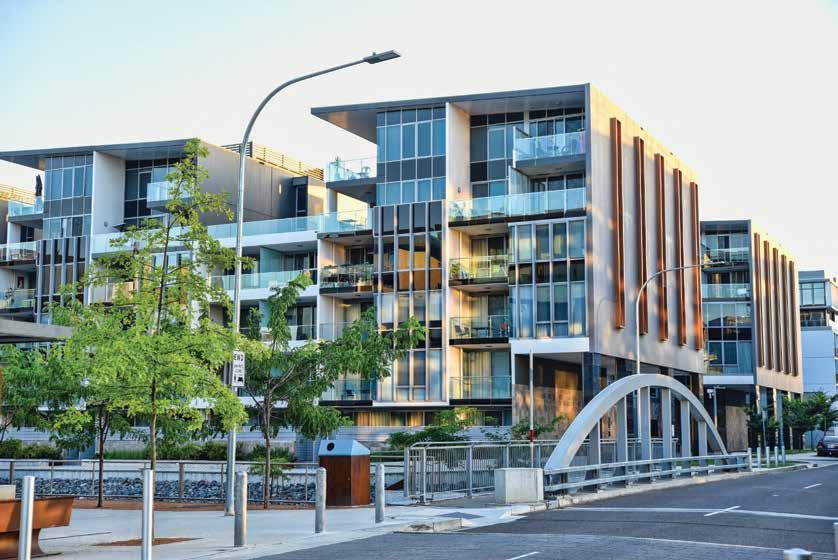

New Ontario legislation that defers the due date for development charges is expected to ease upfront costs for condominium developers and create cash flow headaches for some municipalities. The City of Toronto projects that a longer wait to collect development charges that were previously payable with the issue of building permits will translate into a $1.9 billion budgetary void over the next 10 years.
AA package of recent amendments to Ontario’s Development Charges Act brings the new remittance schedule for builders of ownership housing, allowing them to split development charges into annual installments to be paid during the five years following initial building occupancy. Rental housing and institutional buildings already qualified for deferred development charges prior to this adjustment, but another legislative amendment now eliminates municipalities’ ability to charge interest on outstanding balances.
These changes were introduced through the omnibus Bill 17 — containing amendments to eight different provincial statutes related to housing and infrastructure development — which was tabled and adopted over the course of four weeks this past spring. Other new measures pertaining to development charges:
• ensure that developers will pay the lower of either the development charge rate at the time they submit a complete application or the rate at the time building permits are issued;
• clarify where developers may be entitled to credits; and
• Exempt for-profit long-term care home from development charges.
A new report to Toronto Council’s executive committee notes that the changes will significantly shift the timing of when the City receives development charges. In response, Toronto officials are asking the Ontario government for more scope in how they can spend both development charge revenues and provincial infrastructure funding in order to address anticipated cash flow interruptions.
To address the latter possibility, the report calls for an “appropriate collection mechanism” with enforcement tools to guard against unpaid development charges flowing through to condominium unit owners. It suggests that full payment could either be a requirement for registering a condominium or secured by an agreement that’s registered on the land title.
The legislative amendments also clarify that residential developers will continue to have the option to voluntarily pay development charges in full ahead of the required due date.
“While these funds will ultimately be recovered, the delayed revenue will affect the City’s short-term financial capacity to deliver additional critical growth-related infrastructure and will require the City to reprioritize planned capital projects,” the report states. “In addition, the City will experience higher DC collection risk upon payment deferral to occupancy, in the absence of further Provincial actions.”











Brokers highlight up-and-coming communities across the Greater Toronto Area and Greater Vancouver Area —two areas experiencing population growth more than three per cent annually.




Significant infrastructure investments, specifically new transportation links, are improving neighbourhoods across traditionally undervalued urban and suburban areas, according to REMAX’s Next Neighbourhoods Report.
CCanadians said they want to spend more time in their neighbourhoods shopping at local stores, dining out, and socializing with friends, family and neighbours, underpinning the impact a chosen community has on day-to-day liveability. New infrastructure and community revitalization generate these added benefits.
Here is a look at the budding “next neighbourhoods.”
GREATER TORONTO AREA
Scarborough remains one of the most undervalued areas in the region. For
decades, many have harboured misconceptions about Scarborough due to a variety of outdated biases, however, it’s incredibly safe, has a diversity of housing stock and many positive attributes, including a renowned performing arts school with students coming from across the city to attend.
“Rapid development of construction has improved affordability in Scarborough communities,” says Cameron Forbes, RE/ MAX Realtron Realty Inc. “The average price of a Leaside/Don Mills home–a neighbourhood that’s seeing thousands of units coming onto the market–costs a lot more
than Clairlea-Birchmount, easily upwards of $300,000. With studios, one-, twoand three-bedroom units also coming on the market soon, combined with vibrant independent businesses, restaurants and cultural vibrancy, there are lots of attractive options for homebuyers.”
East York has also seen rapid population and infrastructure growth, which has improved affordability, especially with studios and larger condominium units now available. Buyers in the area are more focused on proximity to public transit, and the expected opening of the Eglinton



Crosstown this fall will have a significant impact on the desirability of the east end, particularly pockets around Birchmount, Victoria Park, Warden and Wexford.
Hamilton is seeing buyers from Toronto moving out in search of greater affordability and more space. The area is becoming increasingly popular with a reputation for a strong sense of community. Conrad Zurini, broker and owner of RE/MAX Escarpment and Niagara notes that many residents appreciate smaller businesses, the growing cultural and arts scene and the opportunity to shop locally in lieu of big box retailers.
ACROSSTHEGTA
Clairlea-Birchmount (Toronto) has

grown in popularity for its blend of urban and suburban living, transit access, and diverse neighbourhoods that appeal to young professionals and families. Its proximity to Taylor Creek Park adds ample green space. Average house price: $932,014.
Wexford-Maryvale (Toronto) is a familyfriendly neighbourhood offering a cozy, suburban feel with quick access to the Don Valley and 401. Just minutes from downtown Toronto, it features mostly low-rise 1–2 story homes and brick bungalows. Average house price: $1,070,857.
Crown Point (Hamilton) in west Hamilton is a diverse, mostly residential neighbourhood with affordable, owneroccupied detached homes featuring finished
basements and backyards. It offers easy highway access, schools, amenities, and a trendy yet exclusive feel close to work hubs. Average house price: $570,000.
Aldershot South (Burlington) on Burlington Bay’s west end, offers easy highway and GO Transit access, a mix of housing, and plentiful parks, green spaces, and waterfront views. It’s growing into a vibrant, well-connected community without heavy traffic. Average House Price: $899,000.
Downtown Markham (Markham) has a new York University campus, rising condo developments, and improved transit, and this growing hub offers restaurants, activities, and cultural


attractions. Average house price: $660,000 to $1,625,000.
Seaton (Pickering) is a rapidly developing masterplanned community in Pickering and is gaining attention for its strategic location and infrastructure. Average house price: $1,013,326.
Don Mills — Victoria Village (Toronto) has been


shaped by the Eglinton Crosstown, among many other East end communities, improving downtown access. They offer top arts schools, larger, more affordable homes than Don Mills/Leaside, and spacious lots with post-WWII heritage. Average house price: $1,126,000.
Access to the SkyTrain and major highways
has improved over the last two years and influenced the assessment of “next neighbourhoods” in the region.
According to Tim Hill, RE/MAX All Points Realty, Sapperton, New Westminster, and Mount Pleasant East, in Vancouver, neighbourhoods are seeing an exodus from the downtown core. “Restaurants and breweries are popping up in Mount Pleasant East which is more walkable and has a better vibe. The growing food and beverages scenes, matched with better affordability than downtown makes this neighbourhood a top up-and–comer.” Hill added.
Increasingly Bridgeport, a Richmond neighbourhood, offers less expensive options. “Buyers are prioritizing affordability, with walkable and complete communities falling second,” says Adam Wachtel, REMAX West Coast.
For buyers in the Vancouver area, there remains a strong stigma to living in close proximity to the bridges and tunnels connecting the city centre. However, these neighbourhoods are more affordable if buyers are willing to compromise.




Bridgeport (Richmond) known as an established neighbourhood with homes averaging 30 years old and located about 20 minutes from Steveston, Bridgepoint offers strong transit access and prices up to $300,000 lower than Steveston. Average house price: $1,069,900.
Ladner (South Delta) on the Surrey/Richmond border, offers homes nearly $1 million less than the GVA average. However, the tunnel creates a mental barrier for some due to traffic and infrastructure work. For flexible commuters, the savings are well worth it. Average house price: $1,149,100.
Mount Pleasant East (Vancouver) blends historic charm with modern flair, offering one of Vancouver’s largest parks—Everett Crowley. Known for its rising affordability and trendiness, it features great dining, shops, nightlife, and colorful wall murals. Average house price: $873,933.
Willoughby Heights (Langley) offers city access via Highway 1, more space, greater affordability, and growing infrastructure, including transit, shops, schools, and recreation. Average house price: $894,516.
Fraser Mills (Coquitlam) is under development, mainly for high-rise condos, offering waterfront access and growing amenities. Despite ongoing construction, it’s a promising

long-term investment as the area continues to develop. Home prices range between $732,000 and $1,796,600.
Coquitlam West (Coquitlam) is a land assembly project which converts industrial land into housing near the SkyTrain, offering early investment potential. Transit-connected areas like this are primed for high-value growth. Home prices range between $838,071 and $1,963,039.
Capstan Way (Northern Downtown Richmond) offers investment potential with ongoing developments, despite some ownership delays. As revitalization continues, businesses and residents are moving in. Average house price: $899,000.


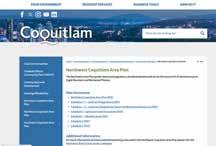



We





BY KENT FORD Swan Lake Village in Markham, Ontario,
was conceived as a seniors-oriented development, with a hybrid of assisted and independent living low-rise apartments and detached, semi-detached and row townhouse units.
TThe community was first governed by independent condominium corporations, which later saw amalgamation, and has been built in phases since it broke ground in the late 1990s. At the time, down-sizers were moving into townhomes because they offered an alternative to mid and high-rise
living. These condo owners now revel in their ability to step outside, to sit, barbeque, garden and chat with neighbours.
Along with this desire is the need to upgrade. Even the best developers assign ground- floor condominium units with the most basic of landscaping. Minimum
width walkway and steps, tiny patios, vertical downspouts directed at foundation walls and typically a sparse smattering of plant material that by species choice is boring at best.
With the assistance of professionally drafted blueprints, a corner unit at 13
Sanctuary Way in Swan Lake Village was divided into separate outdoor dining, lounging and garden rooms. Existing walkways and steps were replaced and widened. Concrete was clad with natural stone. Hand railings, seating, lighting and irrigation were all detailed.
While all exterior landscape space is condominium common element, in the case of this corner town unit, the length of the dividing fence panels between units also defined what would become common element exclusive use space, which was to be maintained by the owners at their expense.
Property managers need to follow a basic check list of procedures with such owners that will lead to approvals and protections that benefit both sides. This includes:
Added design elements: All condominium declarations are different but must typically enforce existing rules for what owners want to add or upgrade, including bbqs, patios, decks, pergolas/ gazebo structures, water features and bird feeders.
New upgrades requiring an alteration agreement: These include awnings affixed to the structure, hand railings affixed to existing landings/steps, HVAC units and hose bibs.
Checking off these procedures will help the owner improve their use of exterior space, allow the condominium to enjoy potential reduced common element maintenance costs, and avoid costly damage and repairs to underground utilities.
Kent Ford is a landscape architect and founder of KFDG Inc., a Toronto-based design and project management firm. He can be reached at kent@kentforddesign.com, @kentforddesign or at 416-368-7175.




Before: Front door entrance prior to landscape renovation.
After: Approved softscape upgrading.
Before: The driveway and connecting walkway access. After: The approved hardscape upgrading.


BY LAURA GURR AND LIAM THOMPSON
The recent decision of the Ontario Superior Court of Justice in Benmergui v YRSCC No 1510, 2025 ONSC 545, provides a sobering illustration of the consequences facing condominium corporations that fail to respond adequately to serious habitability concerns affecting unit owners. The court’s decision underscores the mandatory compliance obligations under ss. 117 and 134 of the Condominium Act, 1998 and expands the remedies available when corporations fail to act with requisite urgency.
TThe applicant, Ms. Benmergui, experienced four separate sewage back-ups in her newly purchased unit between July and November 2024. The first occurred prior to her moving into her unit. Despite repeated pleas for assistance, the respondent corporation failed to treat the matter as an imminent health hazard. Although the corporation
engaged contractors and engineers at various stages, the investigations were piecemeal, communication was delayed, and no clear remediation plan emerged until after litigation was initiated.
On a motion, the court determined that the corporation had failed to comply with its obligations under s. 117 of the Act

by permitting a dangerous condition to persist. The court found that by August 2024 — after three of the four backups — the corporation should have been in “full court press” mode to identify and rectify the root cause. Its failure resulted in the applicant being unable to return to her home for more than six months.
The court granted the applicant interim relief under s.134(3)(c), ordering the corporation to pay for comparable alternate accommodations, including first and last month’s rent, until the underlying issues were resolved. While s. 134(3)(b) contemplates reimbursement for damages already incurred, the court interpreted s. 134(3)(c) as allowing forward-looking relief that is “fair and equitable in the circumstances.”
The corporation’s attempt to rely on Brasseur v YCC No 50, 2019 ONSC 4045, was rejected. In contrast to the
good-faith efforts made by the corporation in Brasseur, the court held that YRSCC 1510 “permitted the unreliable and, frankly, dangerous sewage system to persist.” While not held to a standard of perfection, it is clear that multiple sewage backups causing a unit to become uninhabitable, requires more action than a proverbial shoulder shrug.
The applicant was awarded partial indemnity costs of $14,500.00. The court declined to award substantial indemnity, finding no “grave positive misconduct” but emphasized that the application was necessary to obtain even the limited relief to which the corporation had eventually consented.
This case reaffirms that condominium corporations must treat serious unit-level intrusions — particularly those affecting health and habitability — as emergencies requiring immediate, comprehensive action. A passive or dismissive approach, even if not malicious, may attract liability under s. 117 and prospective equitable orders under s. 134(3)(c).
Legal practitioners advising condo boards should ensure that these obligations are understood, particularly in the context of recurring or systemic building failures.
Although not discussed in Benmergui, the protection that a robust declaration provides to a condominium corporation can also not be understated.
Laura Gurr and Liam Thompson are lawyers with Cohen Highley LLP in London. Cohen Highley has offices in London, Kitchener, Windsor, Strathroy and Stratford. Laura and Liam both provide risk management and regulatory compliance advice to Condominium Corporations and Property Management Companies.












BY DENISE LASH
Several Ontario cities, including Toronto, Ottawa, and Mississauga, have implemented licensing regimes for short-term rentals. These typically require: registration of short-term rental units, proof that the unit is the owner’s principal residence, collection and remittance of Municipal Accommodation Tax (MAT), and compliance with zoning bylaws.
For condo corporations, the implications are clear: failing to regulate shortterm rentals within the building may lead to increased conflict with local bylaws, heightened insurance risk, and strain on community resources.
Short-term rentals introduce a range of issues, including: Security: A steady flow of unfamiliar guests can compromise building safety
and increase the risk of theft or unauthorized access.
Wear and tear: Common elements such as lobbies, elevators, and pools may see accelerated deterioration from heavy guest usage.
Noise and nuisance: Weekend parties or late-night disturbances can frustrate full-time residents and erode a sense of community.
Insurance and liability: Some insurance
providers may deny coverage or increase premiums if short-term rentals are prevalent or not properly disclosed.
Governance tensions: Investor-owners may oppose restrictions, leading to political divisions within the board and ownership.
LEGAL TOOLS AND ENFORCEMENT OPTIONS
Condominium corporations in Ontario have several options to control or prohibit short-term rentals:

“Short-term rentals are here to stay, but that doesn’t mean condo corporations must accept instability in their communities.”
Rules: Under the Condominium Act, 1998, corporations can pass rules to promote the safety, security, and welfare of owners and property.
Declaration amendments: Stronger and more permanent restrictions can be embedded in the declaration, but these require 80% owner approval — a higher but more binding threshold.
Enforcement: Boards can issue compliance letters and, if necessary, seek court orders under Section 134 of the Act. Courts have generally upheld well-drafted and properly implemented rules restricting short-term rentals.
In Ottawa-Carleton Standard Condominium Corporation No. 961 v. Menzies (2016), the Ontario Superior Court of Justice concluded that operating a unit as a hotel-like business through repeated shortterm rentals breached the “single family use” provision in the condominium’s declaration and violated a rule prohibiting leases shorter than four months.
Effective rules should be:
Clear and enforceable: For example, setting a minimum duration for leases. Aligned with municipal bylaws: Ensure rules don’t contradict local licensing requirements.
Reasonably justified: Boards should document the rationale for the rule (e.g., increased complaints or insurance issues).
Well-communicated: Inform owners ahead of implementation, and be prepared to address investor concerns.
The key to successful implementation is buy-in. Boards should:
1. Hold virtual or in-person townhall meetings to explain the risks and proposed solutions.
2.Share examples of how other buildings have handled the issue.
3.Consider owner surveys to gather input before formalizing rules.
Transparency builds trust — and trust makes enforcement more effective when the time comes. Boards should also be prepared for pushback from owners who rely on short-term rentals for income. In these situations, clear and empathetic communication is essential. Boards can explain that the long-term risks — such as rising insurance premiums, legal liabilities, and community dissatisfaction — ultimately affect everyone. Engaging legal counsel early on can help ensure that rule changes are both effective and legally sound. Some corporations are also turning to technology to support enforcement.


Digital guest registration systems, access control logs, and security camera data can help identify patterns of short-term rental activity. These tools provide boards with objective evidence and can strengthen their ability to take timely, justified action when rules are breached.
Short-term rentals are here to stay, but that doesn’t mean condo corporations must accept instability in their communities. By staying informed, updating governing documents, and engaging owners early, boards can strike a healthy balance between protecting community integrity and respecting owner rights.
Now is the time to review your documents, consult with legal counsel, and ensure your corporation is equipped to meet the challenges of 2025 head-on.
Denise Lash is a principal of the condo law firm of Lash Condo Law and founder of CondoVoter (www. condovoter.com), a virtual meeting and electronic voting provider. Denise writes a weekly blog on condo issues facing our condo communities. For info visit www.lashcondolaw.com


































For nearly 40 years, WhiteRose Janitorial has been a trusted name in commercial and condominium cleaning across Canada. What started as a family-run business in 1986 has grown into a national provider, delivering reliable, high-quality cleaning and superintendent services from coast to coast.





At WhiteRose, we don’t believe in one-size-fits-all solutions. We work closely with our clients to develop customized cleaning and maintenance programs that meet the unique demands of each property. With a focus on e ciency, quality, and environmental responsibility, we ensure every space is maintained to the highest standards.
Our team is trained to handle complex cleaning challenges, rapid response needs, and day-to-day property maintenance, making us a preferred partner for property managers and owners nationwide.
WhiteRose Janitorial enhances cleaning standards while optimizing schedules to reduce costs compared to your current service provider. Better cleaning, smarter savings. Contact us today!



450+ reviews
• Janitorial & Floor Care – Tailored cleaning schedules, floor maintenance, and sanitation programs
• Specialty Cleaning – Garage cleaning, pressure washing, postconstruction cleanup, and more
• Superintendent Support – Livein & live-out services, emergency response, minor repairs, and building maintenance
How a bit of tech and a dash of creativity can add up to a pile of savings.

BY SUE LANGLOIS
With the Ontario condo industry approaching 60 years of age, it might be surprising to realize that one of the top condo communication tools in use today is still the unassuming cork bulletin board.
TTypically adorned with an oftenoutdated notice with teeny tiny type and the odd blast of bold red as a bid for attention, it’s a remarkably old-fashioned “device” that still tends to occupy the prime audience real estate on the property: the elevator.
Cork bulletin board notices can only be run one at a time, require a physical presence to change the notice, and
largely tend to be ignored because many of the notices all look the same. Ignored notices are a communication breakdown leading to alienated residents, broken rules and rising costs.
But what if a simple shift — the adoption of digital display technology along with some creatively designed notices — could turn communication from an afterthought into a building’s superpower? It’s
totally possible, and the payoff isn’t just capturing residents’ attention; it’s audience engagement, smoother workflows and perhaps best of all . . . big savings. Digital screens are an extremely effective communication tool. Placed in high-traffic areas like elevators and lobbies, they become a living noticeboard that updates instantly and grabs attention. It’s the one common
information source that nearly all residents will see and they don’t need to tap, click, download, open or remember a login to see it. Just clear, timely info where people already are. With the right setup, even one screen can turn passive communication into an active connection with your community, but setup is key. Some tech tips for elevator screens:
• Use commercial grade screens designed to run 24/7.
• Hardwire the internet to avoid stalled out, frozen screens (elevator shafts are a hostile environment for WiFi).
• Surface-mounted screens are less expensive to replace than something recessed inside the car operating panel.
• Opt for ad-free screens to avoid distracting and/or alienating the audience.
• Consider including the cost of screen installations with capital projects; the additional cost is negligible and communicating a project’s progress ensures a smooth and successful outcome
For properties like townhouses, where an elevator screen isn’t an option, a virtual screen is possible via a URL link that residents can watch on their mobile device or desktop. While it requires a wee bit of effort on the part of the audience (they need to click on the link), a big upside is that everyone is getting their information from the same official source.
It’s not just what you say; it’s how you say it. Instead of walls of text, think bold headlines, clean layouts, and just enough personality to make people look twice.
Notices that are clear, visual, and even a little witty don’t just get read — they get remembered. Creativity turns routine messages into moments that inform, engage, and even delight.
And when messages land, something bigger happens — people start to feel connected. They smile in elevators, chat in hallways, and work together to achieve common goals (the Latin roots of the word “condominium” means “ownership together”).
Communication done well doesn’t just inform; it builds trust, sparks small moments of joy, and lays the foundation for a stronger “condo-munity.”
Better communication doesn’t just improve the vibe — it protects the condo corporation’s bottom line. A clear notice about proper garbage disposal can save $600 by preventing a jammed chute, and recycling tips can avoid fines or worse, the loss of city collection services which can be in the tens of thousands to replace. A reminder not to open a suite door to air out burned toast odours can avoid a $1,500 false fire alarm bill. A water “campaign” with tips on how to save water and prevent leaks can shave $1,000–$2,000 off monthly utility costs. Keeping the peace and building condo-munity can avoid legal disputes and save hours of time better spent on more productive pursuits.
The math is simple: when residents are informed, buildings avoid unnecessary costs — and that adds up fast.
What starts with a screen and a smart notice can grow into something much bigger — a connected, informed, and financially healthier condo. It’s not about adding more noise; it’s about making every message count. When tech and creativity work together, residents feel seen, problems get solved faster, and dollars stop slipping through the cracks. Boring is expensive. Brilliant pays off!
Sue Langlois is Founder and CEO of DigiNotice Inc.
“It’s not just what you say; it’s how you say it.”

















by Peter Altobelli, vice president and general manager, Yardi Canada Ltd.
Canada’s condo market is at a pivotal point. While a rebound is underway after a quieter 2024, the path ahead remains uncertain.
The Canada Mortgage and Housing Corporation (CMHC) forecasts rising home sales and prices in 2025 as interest rates ease and more buyers return. But slower population growth and potential trade disruptions continue to weigh on the outlook.
In Toronto, mar ket signals are mixed. UrbanToronto (April 2025) reports a strong rebound in development activity, with 44 new projects proposed in the first quarter, including 12 condominiums, totaling over 25,000 residential units. It’s the highest number of proposed units in a single quarter in five years, pointing to renewed confidence in the high-rise housing market.
For condo corporations, this moment calls for a smarter approach. Rising expectations, cost pressures and board turnover all demand greater operational efficiency. Technology offers a clear path forward, enabling transparency, stronger communication and a better experience for owners and residents alike.
Smarter financials with less effort
Condo corporations manage millions annually — yet many still rely on outdated tools. Modern property management software simplifies and strengthens financial oversight, making compliance and accountability easier.
With the right platform, boards and managers can track operating budgets, reserve funds and owner payments in real time, all in one system. Automated features like recurring fee postings, payment processing and special assessment calculations reduce reliance on spreadsheets and minimize errors.
Invoice approvals are streamlined through built-in workflows, cutting down on data entry and giving staff more time to focus on long-term planning. From daily accounting to financial reporting, technology helps condo corporations operate more efficiently, and with greater confidence.
Clear communication is essential in condo management. With a mobile app and online portal, owners, tenants and board members can stay informed and engaged, all in one place.
Owners can submit payments, process certifications, book amenities, access documents and use concierge features like package tracking and visitor notifications. Managers save time by automating announcements, maintenance requests and by-law enforcement. A built-in communication hub streamlines outreach by email, text or phone, with a full history of all messages sent and received.
Board members can log in to view financial statements and approve invoices, violations and architectural requests — no paperwork or extra steps required. When communication flows easily, communities run better.
Managing condo records is easier with a centralized dashboard that puts critical data at your fingertips.
Board members and managers can view owners by type — occupant, absentee, tenant — and keep track of purchases in progress, meetings, tasks, owner requests, announcements, community events, violations and architectural reviews.
Need specific details? Centralized data makes it easy to search by owner, unit, pet, vehicle or keyword — and with AI-enhanced tools, finding critical information like ownership history, compliance issues or past requests is faster and more accurate than ever.
With real-time updates and easy access to information, there’s no need for paper files or delays — just clear oversight and faster service for your community.
Canada’s condo market may be facing challenges, but forwardthinking corporations have a clear advantage. With the right technology, boards and managers can simplify operations, strengthen communication and deliver better service — all while keeping costs and risks in check.
The tools are here. Now is the time to use them.

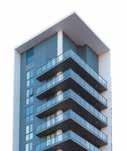







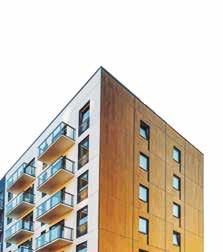



Can AI help run your condo community? Here’s what boards and property managers should know.
BY VALERIIA DOLGOVA
Artificial intelligence (AI) is changing the way we live and work, and that includes how we manage our condo communities.
FFor property managers and board members, day-to-day responsibilities can feel never-ending: responding to resident questions, preparing for meetings, writing notices, and staying on top of compliance. AI isn’t a silver bullet, but when used responsibly, it can help teams reduce administrative workload, improve turnaround time, and create space for more strategic work.
So how exactly can AI support condo governance, and what are the best practices for using it?
UNDERSTANDING THE TYPES OF AI TOOLS IN PROPERTY MANAGEMENT
While AI is a broad term, two categories are most relevant for those managing or governing condominiums:
1.Narrow AI
These tools are built to perform specific tasks. For example, some e-voting platforms use AI to analyze past engagement data and recommend the best times to send voting reminders. This kind of optimization can help communities improve turnout and achieve quorum more easily.
2.Generative AI
These include platforms like ChatGPT or Microsoft Copilot. They generate text based on user prompts and are increasingly being used to help draft meeting agendas, notices to residents, newsletters, and other routine documents.
WHERE AI CAN HELP CONDO TEAMS WORK SMARTER
Here are several areas where AI tools are already making a difference:
Meeting preparation
Annual General Meetings (AGMs) and board meetings require detailed agendas, formatted notices, and wellorganized reports. AI can turn bullet points or rough notes into polished documents, saving hours of manual formatting and writing.
Responding to repetitive resident questions
Common questions such as “where do I find the proxy form?” or “when is garbage day?” can quickly pile up in a manager’s inbox. AI tools can help create a library of standardized

responses, which staff can customize and reuse, ensuring fast and consistent communication.
Writing clear, accurate minutes can be a challenge, especially if meetings are lengthy or go offtopic. AI can help organize transcripts or notes into a structured draft, flag key action items, and provide a starting point for final review.
Note: AI-generated minutes should always be reviewed and approved by management or the board before distribution.
From maintenance alerts to bylaw reminders, property managers write a large volume of communications each month. AI can assist with first drafts, helping to ensure tone and content remain professional and easy to understand.
Not every board member is comfortable drafting formal updates or speaking notes. AI can help by generating scripts for AGMs, welcome remarks, or written messages — especially helpful for new directors.
Keeping residents informed is important, but coming up with fresh content regularly can be time-consuming. AI tools can suggest ideas and create initial drafts for newsletters, seasonal updates, or even plain-language summaries of more complex topics (like reserve fund planning).
USING AI RESPONSIBLY IN A CONDO




AI should complement, not replace, human oversight. Here are a few guidelines to follow: Protect resident privacy: Never include personal or confidential information in AI prompts.
Review before sending: Always review and edit AI-generated content before it’s shared with residents or used in meetings.
Maintain accountability: Final decisions, especially those involving governance or communication, should always rest with board members or management professionals.
While AI won’t manage your building on its own, it can assist with many of the dayto-day tasks that consume valuable hours. Used thoughtfully, it becomes one more tool in a manager’s or director’s toolkit, helping you respond faster, stay organized, and make more room for the human side of community leadership. Valeriia

Having the technical expertise and insight to conduct retrofit projects in established buildings without affecting the day-to-day business of occupants is our specialty. It’s what sets us apart.
The truth is, existing buildings are far more complex and challenging than new construction, and require a unique game plan every time. It’s why the process for delivering mechanical and electrical engineering solutions requires more than a cookie cutter approach – it demands that you have a deep insight into the building and how new systems can be integrated into existing systems seamlessly. All of our projects are reviewed by senior engineers, each with over 30 years of experience in their respective fields, ensuring that our clients always receive engineering services of the highest quality.
T: 416-443-9499 | E: marketing@mcgregor-allsop.com mcgregor-allsop.com









BY SALIM DHARSSI
Artificial intelligence (AI) tools are now part of everyday work in the condominium sector. Tools that use AI to draft content, summarize meetings, or analyze information are widely available and often easy to use, but this access also introduces risk into our organizations.
WWithout guidelines, AI can expose confidential data, weaken your brand, or produce results that mislead owners, residents, clients, or partners. At the same time, ignoring AI means missing opportunities to improve communication, reduce delays, and stay competitive.
Having a clear internal policy can help staff use AI tools responsibly. This applies to condominium corporations, property management firms, and vendors of all types. Lawyers, engineers, trades, accountants, software providers, and others who serve this industry all face the same questions. Which AI tools are safe? When should they be used? What role should humans continue to play?
An internal AI use policy can answer these questions and help your team avoid problems before they arise.
Confidential and proprietary information can easily be shared with third parties if AI tools are used without oversight. Some tools store prompts and uploaded data. This means anything your team enters, including names, contracts, notes, or emails, may not stay private. Many companies do not realize this until something goes wrong.
There are brand risks as well. Clients, residents, and partners expect communication that is specific, thoughtful, and human. People notice when content is written by AI. Generic writing or messages that feel automated can damage trust and leave a poor impression.
A simple policy can help address these risks. It makes it clear how tools should be used, what is permitted, and what the expectations are for staff.
Each company will take a different approach, but here are five key focus areas that can serve as a starting point.
Decide whether staff can use AI to generate content from scratch or only to improve content they create themselves. We prefer that team members write a first draft on their own, even if it is in point form. AI can then be used to improve clarity or tone. This helps the content reflect the person’s intention and the company’s goals.
Not every organization will approach this the same way. Sue Langlois, founder of Digi-Notice, shared that for her communications company, AI often plays a role in helping the team move faster on first drafts, especially in idea-heavy or format-heavy content. “We’ll use AI to generate a starting point, but it’s our team’s experience and creativity that turn that into something that’s right for the client,” she explained. For Digi-Notice, this approach frees up more time to focus on tailoring the message and execution to client needs. Each company will need to decide what balance is right for their work.
List the tools that staff are allowed to use and those that are not permitted. Some free tools and some paid tools may use submitted data to improve their models. If confidentiality is important, the company should review and approve the tools before use. Staff should also avoid submitting client or internal data unless they are certain the tool protects privacy.
Explain what types of work AI can support. This might include refining grammar, drafting content, or summarizing meetings. Should AI be used to write emails to clients? Can AI summaries be shared as is? Should they only be used as references? These are decisions each company needs to make.
One idea is to ask staff to share their own meeting takeaways. They can include an AI summary if helpful, but their own summary is what matters. This encourages thoughtful communication and accountability.
“AI is a tool. It does not replace judgement.”


It is often not possible to tell how AI content was generated after the fact, so some organizations review the prompts used by staff. Prompts are the instructions entered into the AI tool. By reviewing them, organizations can better understand how content is created and help staff learn from each other. This is not about checking up on people. It is about building habits that support clarity and shared learning.
AI is a tool. It does not replace judgment. If staff use AI to help write something or make a decision about a course of action, they are still responsible for the final result. That includes checking for errors, refining tone, and making sure the content meets expectations. A policy should remind staff to take full responsibility for what they produce, regardless of how it was created.
Boards, managers, and vendors are all in the business of service and trust. Communication, reliability, and privacy are essential. If you manage properties, advise clients, or support buildings, AI can help you do your job when it is used with care. Each organization will have its own needs, but if you do not provide guidance, use of AI will be inconsistent and riskier. A few clear principles can go a long way.
Salim Dharssi is CEO and founder of Toronto-based Managemate (managemate.ca), a software platform that helps condominium boards and managers stretch condo fees further by turning scattered information into clear, actionable insights. Salim volunteers on CCI-Toronto’s Education Committee, CCI-National’s Events Committee, and CAI Canada’s Advocacy Committee.
Artificial intelligence can help us work smarter, faster, and more creatively. You can explore and use AI in your everyday work within the framework set forth in this policy.
1. Use AI to enhance your work, after your first draft.
AI is great at refining, rewording, and clarifying. But AI shouldn’t be your starting point.
• Start by writing it yourself, even if only in point form.
• Then, once you’re happy with your draft, use AI to help improve it. For example, use prompts such as “Clarify”, “condense”, “correct tone” “use context” (and give AI the context), then let it refine your work.
• Provide context and specific instructions, including what you want AI to do and what you don’t want it to do.
• Do not copy-paste AI output as-is. Always read, confirm and then reformat and edit so that the work product sounds like you.
Clients and business partners know when a message is written by AI. Let’s make sure they know you contributed to the content and that you were thoughtful with it.
2. Protect company and client data
Don’t use free AI tools without prior company permission. These tools may store or use submitted data to train models or for other purposes. This means we can’t guarantee privacy or security of any company or client data that’s submitted.
• If you’re not sure whether a tool is approved or safe, ask your manager.
• Never input confidential or client-provided data into AI tools. This includes names, email addresses, contracts, or internal documents.
o Exceptions can be made for tools that preserve confidentiality, such as ChatGPT for Business.
o Exceptions can be made for company and client data that is not considered confidential.
3. After meetings
AI can provide meeting summaries, which may be used as a reference to recall details from the meeting. But AI meeting summaries are not a substitute for your own summary to your team and supervisor.
• Always share a brief, actionable summary after a meeting in your own words with your team or supervisor.
• You can attach or link to an AI-generated summary for extra context, but don’t rely on it as the main update.
• Focus your summary on what matters most: decisions, action items, and followups.
We want to hear what you took away from the meeting, not just what AI extracted.
4. Prompt reviews
To keep our use of AI sharp and responsible, anyone on the team can ask a teammate to share the prompts they used for a piece of work. This helps ensure transparency and makes sure we’re thoughtful about how we’re using AI — and not just copying and pasting results. AI should support your thinking, not replace it. Prompt also help us learn from each other because they can teach us how to improve our AI prompts.
5. You are responsible for AI-generated content
Mistakes are a normal part of our daily work, no one is perfect. But if AI makes mistakes, which make their way into your content, that’s on you. Review content generated by AI, don’t trust it at face value. Make sure you reformat and update the content so that it is accurate, reflects your tone and personality, and demonstrates the differentiated value our company delivers in the marketplace.







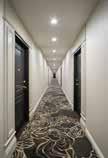





BY MICHAEL ALMEYDA
Surveillance is a delicate matter in any environment. The thin line between upholding safety and breaching privacy can easily be crossed with errors in camera placement, liberties in level of coverage, and misgivings regarding data management.

IIn residential buildings, balancing these two priorities is made more difficult by the blend of private residences and communal spaces, which each require a level of surveillance different from the other.
Fortunately, modern solutions have been designed with privacy in mind. When deployed strategically, ethically, and transparently, surveillance systems are indispensable allies in providing peace of mind without compromising boundaries.
Building managers may be tempted to install security cameras in every corner. However, excessive or poorly positioned cameras lead to higher operating costs and potential violations of resident privacy and local regulations.
A useful reminder when designing surveillance plans is to ensure that key access points, shared amenities, and vulnerable exterior areas
are sufficiently monitored — without crossing into private or semi-private zones. Cameras should be stationed in building entrances and exits, lobby and reception areas, parking lots and garages, elevator lobbies, mail and package rooms, and other shared amenities (e.g., laundry rooms, pools, gyms). It’s important that cameras placed in these locations should not be directed towards windows, balconies, and unit doors, as they may inadvertently capture movements and interactions inside private residences.
Ideally, surveillance solutions providers are involved in the design and construction phase, to ensure that correct surveillance technology is used and maximized. Reputable providers will recommend the use of cameras with privacy masking features where necessary, such as within views of private balconies and windows. Privacy masking discriminates against these sensitive areas even before recording, helping tailor coverage while minimizing intrusion.


Many surveillance solutions are available in the market today, and selecting the right camera for an area will not only contribute to optimal performance — it will also support a privacyconscious approach.
For parking garage entrances, license plate recognition (LPR) cameras are ideal. These cameras assess license plate numbers with high precision; and when connected to access barriers, they can allow or deny entry to registered or non-registered vehicles accordingly. By focusing strictly on license plates, LPR cameras support controlled access without monitoring residents or bystanders. This targeted approach not only respects privacy but also contributes to a safer parking environment by helping to prevent unauthorized access, vehicle loss, or damage.
Bullet cameras are known for their conspicuous design that may deter bad actors in building lobbies or package delivery zones. These cameras are also useful in limiting coverage as they are fixed and directional, making them also ideal for areas with entries to nearby private spaces.



Meanwhile, dome cameras are more discreet, minimizing the feeling of being watched. They provide wide-angle coverage while keeping a low visual profile, perfect for common indoor areas like elevators and hallways.
For large open spaces such as courtyards, pools, and courts, pan-tilt-zoom (PTZ) cameras offer flexible, remote-controlled visibility. When equipped with privacy masking that digitally blocks nearby private areas, PTZ cameras allow for comprehensive coverage without compromising personal space.
In mechanical rooms, along facility perimeters, and in nighttime or dimly lit environments, thermal cameras offer unmatched performance. These devices capture only heat signatures — rather than full visual footage — making them ideal for privacy-conscious applications. They enable reliable movement detection without identifying individuals, helping organizations monitor sensitive areas while respecting occupant privacy. For example, thermal cameras placed near elevator control rooms or HVAC systems can detect abnormal temperature increases, automatically triggering maintenance alerts to prevent equipment failure or costly downtime — all without compromising anyone’s identity.
To further support privacy while enhancing safety, many modern surveillance systems now incorporate edge-based analytics. These smart features allow cameras to detect specific incidents — such as a person slipping and falling, glass breaking, or shouting — without transmitting constant video streams to a central server. By processing data on the device and triggering alerts only when predefined events occur, these technologies minimize unnecessary surveillance while enabling rapid response to emergencies.
By carefully selecting cameras based on their functions and capabilities, property managers can exercise responsible surveillance that stays alert and informed while reducing unnecessary capture.
The evolution of surveillance technology has allowed for monitoring that is simultaneously comprehensive and respectful. Aside from privacy masking, many surveillance solutions come equipped with features that support privacy-conscious practices:
“Many surveillance solutions come equipped with features that support privacy-conscious practice.”

Most condominium units are heated and cooled by a fan coil. If your condominium is older than 20 years, you are at risk to:
• Deteriorating fiberglass insulation
• Leaks from rusted drain pans
• Microbial growth


Event-Based Recording: footage is captured and recorded triggered by certain events (e.g., yelling, altercations), limiting recording to critical events only.
Edge-Based Analytics: recorded data is processed directly within the cameras, removing the need to send to centralized servers.
Remote Privacy Controls: surveillance administrators can blur faces and redact audio from recordings before sharing footage with third parties.
In Canada, residential buildings are subject to federal and provincial legislation, such as the Personal Information Protection and Electronic Documents Act (PIPEDA). Such regulations safeguard

residents’ privacy by ensuring that surveillance carried out is necessary and justifiable.
Collect only what is necessary: do not capture footage in areas where there is a reasonable expectation of privacy.
Minimize retention time: unless needed
for investigation, videos should only be stored between 7-30 days, depending on its purpose.
Keep data secure: recorded footage should be password-encrypted and stored securely with access restricted to authorized personnel.
Practice accountability: keep logs of when and why footage is accessed, and by whom.
Failure to comply with these principles can lead to complaints, legal penalties, or loss of trust. Property owners are encouraged to consult with privacy professionals or legal advisors when designing or updating surveillance policies.
Being transparent as to what surveillance systems are in place, what data is being collected, and for which purpose it is to be used, invites openness and cooperation.
For property managers, the commitment to surveillance transparency can be demonstrated in many ways. One good practice is by developing a surveillance and privacy policy document for the building, which exhaustively outlines information regarding the purpose of the surveillance systems, their locations, data storage duration, who has access to the video footage, and the conditions under which footage will be reviewed or shared.
This document can be included in welcome packets and supplemented by visible signages in the different areas of the property. Any changes or updates should also be promptly communicated to residents.
In an era of growing digital awareness and data sensitivity, surveillance technology has evolved to accommodate the need for privacy and personal space. However, the successful implementation of a privacy-conscious surveillance approach requires harmony among the devices, the implementors, and the subjects. By following best practices on camera use and placement, legal compliance, and transparency and communication, building managers can create environments that promote safety and privacy while fostering trust.
Michael Almeyda is business development manager at Axis Canada, driving innovation in audio, intercoms, and access control. With 17+ years of industry experience, he’s led notable projects in healthcare and education, leveraging his expertise to enhance safety and communication. A certified Axis and Security Professional, Michael brings a unique blend of technical knowledge and customer-centric approach.

With over 45 years of experience in condominium law, DSFM is legal counsel to over 500 condominium corporations, as well as condominium purchasers and homeowner groups, across Ontario.


The Ottawa Mission has launched a maintenance services training program (MSTP) to provide a career path for individuals facing homelessness and poverty, while addressing a crucial labour gap in the building management industry.
BY REBECCA MELNYK
The program is a work-based initiative designed to equip individuals with the skills and certification necessary to secure stable employment as building superintendents in the residential sector or as commercial building operators. The four-month program offers a combination of classroom instruction, hands-on training, and industry-recognized certification to help participants build meaningful careers in the building management sector.
FFor more than 90 years, the Ottawa Mission has empowered individuals through programs that foster financial independence and community contribution.
This new program will provide participants with real-world experience in essential maintenance skills, including the following: plumbing repairs, carpentry and drywall maintenance, painting and finishing work, and janitorial and general upkeep.
An essential component of a building superintendent’s role is fire safety. The Ottawa Mission partnered with National Life Safety Group to integrate free specialized fire safety training to ensure graduates not only understand maintenance, but also the critical responsibility of protecting lives and property through fire code compliance and emergency preparedness.
The accredited fire safety training was specifically designed for building superintendents and complies with the Occupational Health & Safety Act, exceeds the requirements of the Ontario Fire Code, and is recognized by the Condominium Management Regulatory Authority of Ontario for continuing professional education credits.
Each participant has successfully completed the program, achieving the required 75 per cent passing grade on the final exam. With this knowledge, graduates enter the workforce prepared to enhance fire safety and compliance in buildings.
“The graduates possess practical experience, a strong work ethic, and a commitment to safety — all qualities that will make them highly sought

after,” said Jason Reid, senior advisor for National Life Safety Group. “For the community, the maintenance services training program plays a vital role in breaking the cycle of homelessness.”
The program follows the successful blueprint of the Ottawa Mission’s
renowned food training program, which has helped hundreds of individuals build careers in the food service industry. To date, 373 people have completed the food training program, with an impressive 90 per cent securing employment upon graduation.

“The Ottawa Mission is not only changing individual lives, it is strengthening the building management industry and enhancing the safety and quality of residential properties,” added Reid. “By investing in people, we are investing in stronger, safer communities for all.”

FRIDAY
SEPTEMBER 19, 2025 8AM TO 4PM
OTTAWA CONFERENCE & EVENT CENTRE 200 COVENTRY ROAD, OTTAWA ON, K1K 4S3 powered by
CASINO NIGHT - SEPT. 18 AT 6:30 PM
Join us at Ottawa Mill Street Brew Pub for an exclusive night of networking, games, and fun with vendors & property managers!
Want to put your brand on the table?
SCAN TO SEE sponsorship opportunities!



Canada’s federal housing advocate, Marie-Josée Houle, is directing the National Housing Council to launch a review panel to examine the shortage of accessible housing across every province and territory. About eight million Canadians have a disability, up from 6.2 million people in 2017. With life expectancy rising and Canada’s senior population growing rapidly, the demand for accessible housing is increasing sharply. Many people will be unable to remain safely in their homes.
AAs Canada seeks to build a record number of new homes, the Canadian Human Rights Commission says this is a pivotal moment to build in accessibility, as well as the viewpoints of people with lived experience, from the very start.
“There is a shocking lack of accessible housing in Canada, and this is particularly amplified for people in rural, remote, and Northern areas,” said Houle. “In fact, most of us will need some accessibility features in our homes at some point in our lives. We need accessible and inclusive housing to be built into Canada’s housing policies and strategies.”
Some people with disabilities have turned to medical assistance in dying because they can’t access housing and support that meet their needs. A lack of such housing is contrary to Canada’s international and domestic human rights obligations and it undermines countless other human rights, such as health and social services systems and workforce participation.
Data from a joint monitoring project between the Office of the Federal Housing Advocate and the Canadian Human Rights Commission shows that people with disabilities are overrepresented in all aspects of inadequate housing and homelessness. They are more likely to live in unaffordable and unsafe housing, are often living in homes that are not accessible or do not have the necessary physical aids, and are unable to access crucial support.
The findings and recommendations of the review panel will be laid out in a report to the federal minister responsible for housing. The Minister must respond to the report within 120 days and table that response in the House of Commons and the Senate.


Your Homeowner Digital Assistant is here to instantly respond to resident inquiries.
HODA frees up your manager to focus on the bigger picture, like capital improvements, budgeting and financial reporting, vendor relationships, and more.
Managers can spend less time on
U Common resident inquiries
U Managing emails and calls
U Repetitive service requests

www.fsresidential.com/meethoda
And more time on
D Board objectives
D Enhancing resident experience
D Strategic projects



BY STEVEN LUPO
Sub-metering plays a vital role in modern building management, offering a practical way to optimize energy usage while strengthening unit relations. As its adoption expands, building managers, property owners, condo/ strata boards, and residents should pay close attention to one emerging sub-metering technology—thermal metering.
Sub-metering enables each unit in a multi-residential building to have an independent meter, allowing tenants to control their own energy usage and pay only for what they consume. Additionally, they can shift energy loads to mid- and off-peak times, promoting cost savings and sustainability through reduced greenhouse gas emissions.
For building owners and managers, the advantages are clear: predictable electricity costs for shared spaces, reduced operating expenses, and lower maintenance fees.
Although electricity sub-metering has been widely used by utilities and private companies for years, adoption has been gradual. As recently as a decade ago, many new developments in North American cities were not individually metered. Today, however, the trend continues to gain traction, with approximately 75 per cent of new builds incorporating individual electricity meters.
Sub-metering also extends to water usage. Although less widespread than electricity metering in Canada, its adoption is growing as municipalities, utilities, and residents seek more efficient ways to better manage water consumption and the associated infrastructure costs.
The newest form of sub-metering involves the management of heating and cooling infrastructure — thermal energy — delivered through centralized systems. As more property owners, managers, and unit owners recognize the benefits of sub-metering for electricity and water, the awareness and adoption of thermal metering is also gaining momentum.
Centralized heating and cooling is far from new. In fact, its origins trace back to Roman times with the hypocaust system, which efficiently distributed hot air through spaces beneath floors and walls.
While multi-residential buildings in North America increasingly use centralized heating and cooling systems, a key challenge remains: fairly allocating and metering individual consumption. Unlike water or fuel, which are tangible and easily measured, thermal energy requires a different approach to ensure accuracy.
For example, if you pump 30 litres of gas into your car, you know your gas gauge will move up, so it’s easy to visualize what you’ve purchased. By the same token, people have a perception of volume when it comes to water, understanding what a litre of water looks like. How do you measure heating and cooling in a similar way?
“Thermal metering is poised to become an essential component of sustainable building management.”
Over the past two decades, various methods have been tested to measure heating and cooling demand, with many proving ineffective. For example, early techniques relied on square footage estimates, which lacked precision. The need for a better way to allocate thermal costs led to the adoption of specialized thermal metering technology.
In the early 2000s, thermal metering was largely unregulated, and few understood how these meters functioned or what they measured. Today, however, advanced thermal meters employ cutting-edge ultrasonic technology to provide precise readings. These meters work by measuring the flow rate of heat-transfer fluids (such as water) using ultrasonic sensors, while high-precision temperature gauges detect the temperature differential between incoming and outgoing pipelines. This allows for accurate billing based on energy consumed for heating or cooling each individual residential unit.
Several thermal meter models are now Measurement Canada approved and offer real-time
data collection. For building owners and condo corporations, these meters provide invaluable insights into central plant performance, helping identify efficiency trends and potential issues. Just as important, thermal sub-metering helps to provide a better understanding of building performance overall.
Thermal metering offers a reliable solution for both new developments and retrofitted buildings, ensuring fair cost distribution for tenants while supporting energy conservation efforts. As more stakeholders continue to recognize its benefits, thermal sub-metering is poised to become an essential component of sustainable building management, and an area that building managers and condo boards should begin to consider — if not already.
Steven Lupo is Managing Director, North America at Trilliant, with more than 20 years of experience in leading early-stage and established businesses in Energy Management, Utility Solutions, and Smart Metering.



BY KARTHICK KANAGALINGAM
Today’s smart condos are evolving into fully integrated communities, from lighting and climate control to access systems. As part of a wider building strategy, one area seeing a quiet but impactful transformation is the automation of window coverings and shades, particularly through the implementation of mesh protocols used widely around the world for reliable, smart, wireless communication.
In traditional systems, window shade motors are typically controlled via radio frequency (RF), which works well in isolated units but presents challenges when scaled across an entire building. RF-based systems can experience interference and missed signals when many motors operate simultaneously—such as at sunrise, when multiple units schedule shades to rise at the same time.
Mesh network protocols offer a more reliable alternative. With certain motorized roller shades, devices don’t communicate in one direction with a remote; instead, they form a wireless mesh network via a central hub where each device passes along information to others. This reduces interference, improves reliability, and provides valuable system feedback — helpful for monitoring important device information, such as battery life or for diagnosing issues.















For new construction and large-scale retrofits, one often overlooked challenge is how smart systems like motorized shades are commissioned and handed off to new residents. Many smart systems rely on Wi-Fi and an active internet connection for setup and end user registration, which isn’t always available when buildings are still under construction or owners haven’t moved in yet.
By contrast, a system that can support deployment of smart technology without an active internet connection is an attractive prospect to project stakeholders. With today’s advanced technology, this is possible using certain products, which use mesh network technology to pre-commission smart shading systems without an active internet connection. This allows builders or integrators to set up the system prior to occupancy. When owners move in, they scan a QR code to create credentials in a corresponding app and have a fully operational system. No additional installation steps or extra site visits are required, and setup is simplified for both residents and property managers.


A mesh network can provide visibility to both residents and service providers. If a system isn’t working as expected, the installer or their support teams can remotely view device status — such as whether a device is unplugged or a motor needs recharging — before making a service visit. This kind of proactive troubleshooting can help minimize downtime, improve user satisfaction, and reduce the burden on management to address issues that are simple, self-service fixes.
Advanced motor features, like scheduling or “away” simulation modes, can be configured through most home automation apps. These functions help improve comfort, privacy, and energy efficiency while offering a sense of security when residents are away. Because these features are software-based, they often don’t require additional sensors or devices to implement—reducing complexity for installers, users, and builders alike.
Unlike proprietary smart home systems,
• Canada’s smart home market is projected to reach $4.7 billion in 2025, and is estimated to reach $6.4 billion by 2029, according to Statista.
• In a recent Ipsos poll, conducted last fall on behalf of CIBC, 73% of Canadians who have completed or are planning home renovations said they are interested in incorporating smart, sustainable and/or energy-efficient technology.
• A 2024 TELUS Data & Trust survey found that 79% of Canadians believe data privacy matters more now than ever before, with 72% expressing worry about how organizations handle their personal data.
many mesh network compatible motors are part of an open ecosystem, meaning they can integrate with a wide range of third-party smart home platforms. This flexibility gives builders and residents more choice when it comes to integration with other systems, including lighting, security, and climate control.
As more condo buildings adopt communitywide automation systems, the technologies that support them need to be flexible, scalable, and easy to maintain. Mesh networkenabled shading solutions offer a compelling model — particularly for developers looking to reduce post-installation support and enhance the resident experience.

Smart communities aren’t built from a single device or system — they’re the result of thoughtful infrastructure decisions that balance functionality, usability, and longterm value.






A vast site in the east of Montreal, currently occupied by two shopping centres, will be redeveloped into a transit-connected, mixed-use neighbourhood at the intersection of Jean-Talon Street and Langelier Boulevard. The project will unfold over seven phases spanning 15 years and require a total investment of $3.5 billion. Groupe MACH is planning to include 7,000 residential units as well as a structuring linear park for the LANGELIER project.
Completion of phase one will coincide with the opening of the new Blue line metro station, scheduled for 2031. A first for Quebec, the development will see two residential towers integrated directly into the future metro station through a partnership between Groupe MACH and Transgesco, a subsidiary of the Société de transport de Montréal. The partnership was made possible by Bill 61, passed in December.
GWL Realty Advisors is transforming College Park, one of the most significant architectural landmarks in Toronto. A century ago, it was originally envisioned as a 37-storey retail tower to rival Rockefeller Center, but the Great Depression forced the plan to be scaled down.
The new project will create 2,334 housing units, a hotel, retail and entertainment spaces, and public areas at the intersection of Yonge and College. Three residential towers will bridge the old and the new, with sculptural forms inspired by 1920s skyscrapers, while the historic interior arcade will be restored to evoke a Parisian-style vitrine shopping experience.
Prospective purchasers can now expect information about flooding risks on Nova Scotia properties as a basic element of vendor disclosure. The Nova Scotia Real Estate Commission has updated its property disclosure statement (PDS), a standardized form that sellers use to convey their knowledge about a property, to include information about coastal flooding and erosion, general flooding and pooling or drainage issues.
The Commission is the regulatory body for Nova Scotia’s real estate brokers and agents. While it is not mandatory for prospective sellers to prepare a PDS, realtors are required to use the standardized form if a PDS is offered. In practice, the Commission reports that most sellers do opt to provide a PDS, as it is seen as an instrument that can protect them from later liability claims.
Accessibility Standards Canada published CAN/ASC-2.8:2025 — Accessible-Ready Housing, an equity-based standard that will allow people to adapt their homes to their changing needs — whether it’s aging in place or accommodating a disability.
The standard covers everything from entrances, kitchens, bathrooms, and stairs, to parking, and emergency features. It helps prevent barriers before they exist by building flexible features into the design of dwellings. For instance: reinforced walls for future lifts or grab bars; clear doorways and paths of travel for mobility devices; and reachable or easily modified operating controls, like thermostats.
With Paragon Security your Safety isn’t left to chance. Our CPTED-certified leadership team applies proven Crime Prevention Through Environmental Design principles to your properties — using smart lighting, clear sightlines, secure access, and thoughtful landscaping — to prevent crime before it starts.
Scan our QR code to discover how together, we can make safer communities and stronger neighborhoods.















































